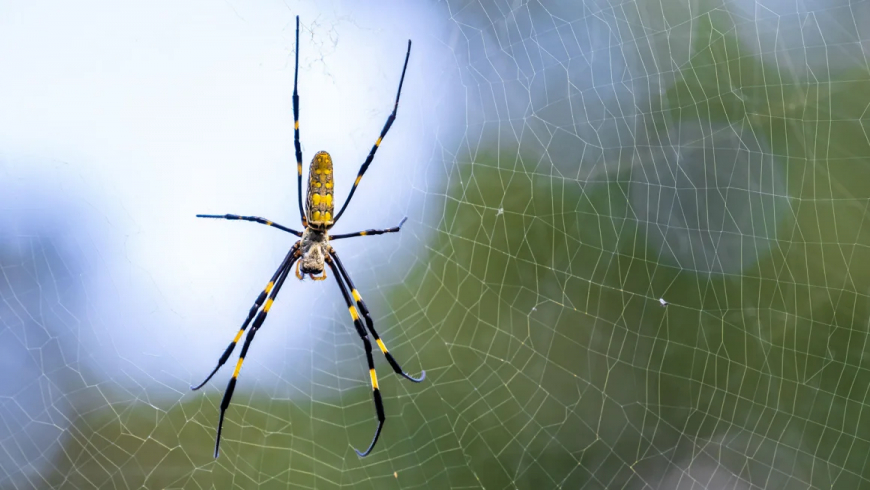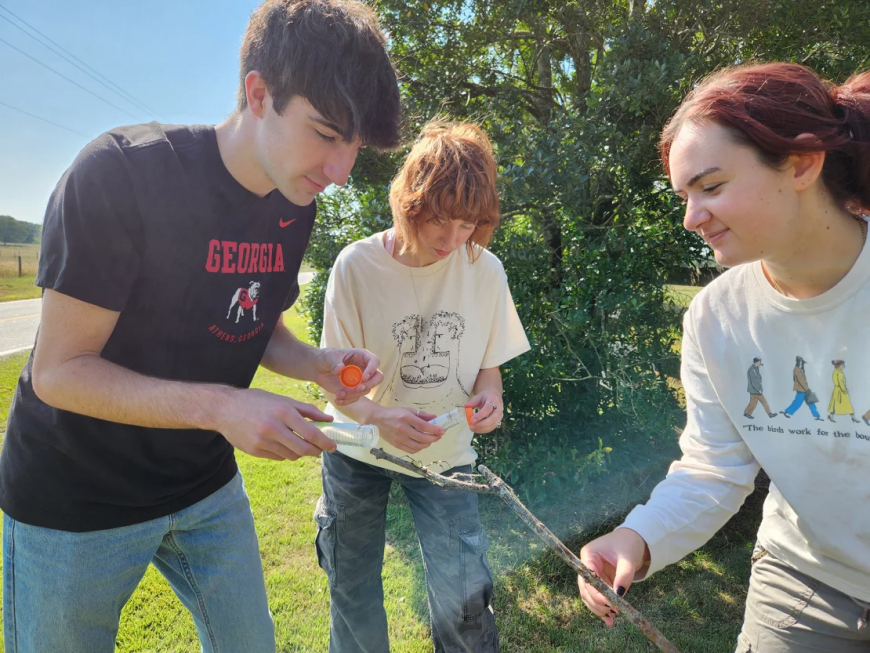Invasive Jorō spider is surprisingly tolerant of busy urban settings, according to new study

As the Jorō spider continues to spread across the southeastern United States, its spindly homes can be spotted almost anywhere — even on power lines and stoplights hovering over busy roads.
Typical spiders — and most creatures — tend to find the noise and wind disturbance from nearby busy roads to be too stressful, but the Jorō spider doesn’t seem to mind much, according to a new study published in Arthropoda on February 13. This research could explain why the spiders are regularly spotted in urban areas that native spiders don’t inhabit and suggests the creatures are well-suited to thrive and spread in similar locations throughout the United States.
“If you ever look at a spiderweb next to a road, they’re jiggling and shaking, and it’s a cacophony of stimuli. … Roadsides are a really harsh place for an animal to live. But Jorōs seem to be able to live next to them,” said lead study author Andy Davis, a research scientist at the University of Georgia’s Odum School of Ecology.
“It’s kind of unfortunate for us here in the US — it so happened to be the place where the spider got deposited about 10 years ago, and it just so happens that the (spider) that got dumped here is one that can do really well with humans.”
Tolerance for being around cars and people
Jorō spiders, or Trichonephila clavata, were first spotted in the United States around 2013, according to a University of Georgia news release. The creatures — which grow up to 4 inches (10 centimeters) in length, about the size of the palm of a human hand — have since spread rapidly across the southeastern states.

University of Georgia ecology students and study coauthors Kade Stewart, Caitlin Phelan and Alexa Schultz handle a Jorō spider.
Classified as orb weavers, the spiders catch prey using their giant, three-dimensional webs. The Jorō will sit in the middle of the web and wait to feel a vibration, signifying that an insect has been caught in the sticky trap, allowing the spider to rush down and capture it.
The researchers behind the new study, including Davis and undergraduate ecology students, conducted more than 350 tests on spiders across 20 roads using a tuning fork on the spider’s web to simulate prey behavior. While the researchers had expected noisy roadsides to interfere with the spider’s hunting abilities, the tests found that spiders near moderate to heavy traffic roads were only slightly less likely to attack the simulated prey than those near low-traffic roads. The spiders near heavy traffic attacked 51% of the time, while those in less busy areas attacked 65% of the time.
“This does help us dial in on one potential aspect of this species to look at, because it does kind of set the boundaries — how far is it going to spread? And is it not going to stay restricted to the South, and in forested areas, or is it going to move into cities where the likelihood of interacting with them between the spiders and humans increases?” said Floyd Shockley, collections manager for the Department of Entomology at the Smithsonian National Museum of Natural History in Washington, DC.
Shockley, who was not involved with the study, said he was surprised to see only a little more than 10% reduction in the spider’s vibration-detecting efficiency but was not shocked that the species seemed to have a natural tolerance for being around cars and people.
“Whereas most of the other species like to stick around in the woods, the Jorōs specifically like to move into urban habitats,” Shockley said. “They’re capitalizing on easy hunting, easy access to prey. … They’re not particularly interested in us; they’re interested in the fact that we make the condition super easy for them to get the prey that they need to complete their life cycle.”
Urban life offers a certain ease for the Jōro spiders because they seem to prefer making their webs on structures where lights are nearby, such as between buildings or on telephone poles, Shockley said, explaining the light tends to draw in insects they eat.
The study authors cited past studies that had found roads had a negative impact on the abundance and diversity of insects, but the Jorō spider, and many of its cousins within the Trichonephila genus, are surprisingly urban tolerant, Davis said, and choose to build their homes near busy areas.
The researchers said they don’t know why these spiders are better suited to city life than others. But Davis said he is hoping to find an answer with future studies, where he plans to research the physiology of a Jorō spider and the creature’s response to stress.
“Compared to other spider species, Jorō spiders have this sort of unique way of reacting to stress, behaviorally that is, and we think that this is part of the same sort of thing where somehow these Jorōs are just unique in that they can live in a stressful environment,” said Davis, who conducted a 2023 study that found the species is rather timid and tends to “freeze” when disturbed. The spiders’ shyness might help them endure more urban settings as the prolonged freeze could help to conserve energy, the researchers wrote.
What to do when you come across a Jorō spider
As the nonnative Jorō spider continues to spread in the region, the spiders pose a threat to native species that are beneficial to the environment. The spiders do not appear now to have a negative impact, Shockley said, but as they continue to multiply, they could start to displace native spiders as they eat insects the native spiders also need to eat.
While conducting the study, the researchers found evidence of the Jorō spiders coexisting with native spiders, Davis said.
The spider is venomous, but its fangs are incapable of breaking human skin. So while it is advised to kill certain invasive species such as the spotted lantern fly, the Jorōs can be left alone, Davis said.
And the Jorō spiders eat species that are good and bad for the environment, including the infamous lantern fly, he added.

 Phương Nhung
Phương Nhung 





